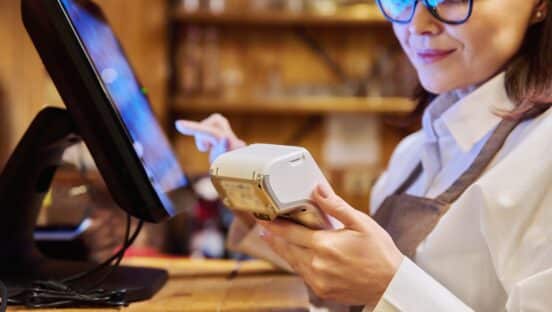According to a new report from the National Restaurant Association, 86 percent of quick-service restaurants raised menu prices in 2022. From an operator’s perspective, price hikes make a lot of sense—as labor and food costs rise, so, too, should menu prices.
The problem is that consumers are also dealing with inflation. According to recent data from Vericast, 64 percent of consumers say rising prices are making regular dining at restaurants too expensive. This response was especially true from some key demographics: baby boomers, Gen X, frequent quick-service visitors, and those who frequent pizza restaurants.
“Consumers have less money because of inflation, so they’re looking to cut back on spending,” says Peter Boivin, VP head of industry at Vericast, a marketing solutions company that works with over 600 restaurant brands, including 41 of the top 50 quick-service restaurants in the U.S. “Restaurants and grocery stores are the top two places where consumers begin to cut back.”
It’s not that consumers stop dining out altogether, Boivin explains, but rather, they tend to start “trading down.” In other words, if a consumer would normally go out to a fine-dining restaurant a couple of times a month, might instead go to a casual-dining restaurant. A couple that usually goes to a casual-dining restaurant may begin considering fast-casual restaurants, and so on and so forth—Vericast found that 34 percent of consumers who formerly frequented fast-casual restaurants have switched to quick-service restaurants in order to save money.
Trading down can also take another form. It can mean consumers stay in the same segment–perhaps even frequent the same restaurants—but opt for menu items that they perceive bringing some type of value to the table. “I think that’s the biggest story in the marketplace that’s happening right now,” Boivin says. “The challenge is to get consumers through the door and to get them to trade up to high-margin items. We know that the value menu is attractive to consumers—but it’s not going to make the operator enough money.
Getting quick-service consumers to trade up from the low-margin value menu is important. Focusing on 38 percent of heavy quick-service users—defined as eating at a quick-service restaurant once or more per week—will make a significant impact on sales.
The key to earning that loyal foot traffic and getting consumers to trade up rather than down during uncertain economic times, Boivin says, is for restaurants to incentivize consumers. One way to do that is to offer coupons and discounts: Vericast found that 23 percent of heavy quick-service consumers use coupons and discounts to upgrade to the regular menu versus the value menu, and 25 percent of these heavy users typically use coupons to upgrade to the regular item and add on a value-menu item.
In addition, incentives drive consumers to try new restaurants. Vericast found that 53 percent of consumers are more likely to try a restaurant they’ve never ordered from or visited before. This was especially true of millennial parents (60 percent of whom said they were more likely to visit a restaurant if they had a coupon or discount offer), and of households that earned more than $100,000 per year. Those are two of the most valuable consumer bases to just about every quick-service brand.
Vericast also found that discounts and coupons may eventually lead to greater brand loyalty. For example, half of the consumers polled said coupons and discounts dictate where they will eat, whereas 44 percent consumers said they order from restaurants more often if they offer printed coupons or discounts. If operators incentivize the right items consumers will be more likely to spring for a high-margin item like a beverage, a side. Thus, a coupon can help generate higher visitor frequency and bigger check sizes for the operator.
Vericast’s value proposition for the thousands of restaurants it works with is that it uses its troves of data to get to know consumers and helps businesses target those consumers with both print and digital media. Based on the organization’s long track record of success, restaurants have come to count on Vericast to turn consumers into first-time guests, and eventually, brand-loyal diners.
“One thing we hear in the marketplace is that brands only want to offer incentives through their app, Boivin says. “Of course, it’s important to message to your current guests, but with a continued traffic slowdown on the horizon, reaching and motivating a larger mass audience is necessary to make a significant impact on sales. In addition, we know print drives consumers online to look at the menu, download the app or to start an online order.”
For more on Vericast’s capabilities, visit the company’s website.














